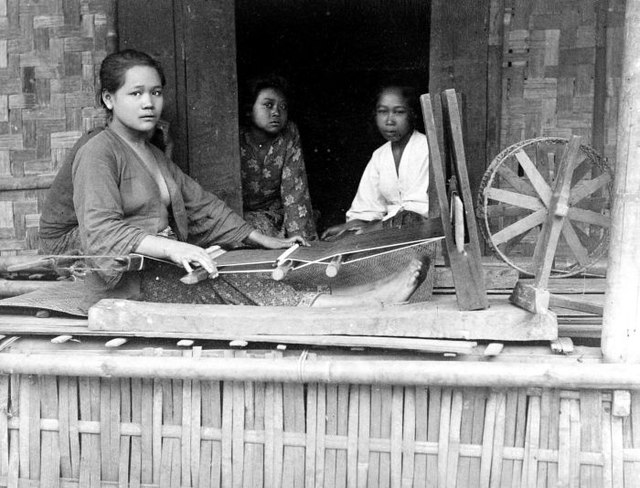The lungi is a type of sarong that originated in the Indian subcontinent. The lungi, which usually multicoloured, is a men's skirt usually tied around the lower waist below the navel. It can be worn as casual wear and night wear. It is favoured in hot and humid climates where the airflow it allows makes it more comfortable than alternatives.
A boy in a village of Narail, Bangladesh wearing a lungi with simple twist knot
The border of a Bangladeshi lungi, showing the black & white reinforced weave border to minimize fraying
Boatman in Bangladesh wearing a lungi
Salt-field worker in Tamil Nadu wearing a lungi in typical tucked-up position for work
A sarong or a sarung is a large tube or length of fabric, often wrapped around the waist, worn in Southeast Asia, South Asia, Western Asia, Northern Africa, East Africa, West Africa, and on many Pacific islands. The fabric often employs woven plaid or checkered patterns or may be brightly colored by means of batik or ikat dyeing. Many modern sarongs have printed designs, often depicting animals or plants. Different types of sarongs are worn in different places in the world, notably the lungi in the Indian subcontinent and the izaar in the Arabian Peninsula.
Dutch military personnel wearing sarong, 1949
Three women wearing sarongs in 1905
Sundanese sarong weaver in Bandung, West Java, present-day Indonesia, 1900–1940
Sarung denotes a length of fabric as a garment.








